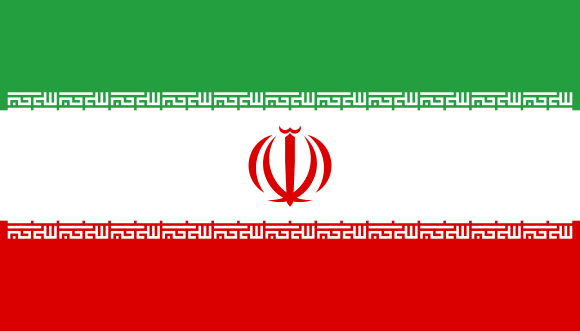Chogha Zanbil

Chogha Zanbil is an ancient Elamite complex in the Khuzestan province of Iran . It is one of the few existent ziggurats outside of Mesopotamia . It lies approximately 42 km (26 mi) south-southeast of Dezful , 30 km (19 mi) south-east of Susa and 80 km (50 mi) north of Ahvaz .
Band-e Kaisar

The Band-e Kaisar , Pol-e Kaisar , Bridge of Valerian or Shadirwan was an ancient arch bridge in Shushtar , Iran , and the first in the country to combine it with a dam . Built by a Roman workforce in the 3rd century AD on Sassanid order , it was also the most eastern Roman bridge and Roman dam , lying deep in Persian territory . Its dual-purpose design exerted a profound influence on Iranian civil engineering and was instrumental in developing Sassanid water management techniques .
The approximately 500 m long overflow dam over the Karun , Iran's most effluent river , was the core structure of the Shushtar Historical Hydraulic System from which the city derived its agricultural productivity , and which has been designated by the UNESCO as Iran's 10th World Heritage Site in 2009 . The arched superstructure carried across the important road between Pasargadae and the Sassanid capital Ctesiphon . Many times repaired in the Islamic period , the dam bridge remained in use until the late 19th century .
Tomb of Daniel

The Tomb of Daniel is the traditional burial place of the biblical prophet Daniel . Various locations have been named for the site , but the tomb in Susa , Iran , is the most widely accepted , it being first mentioned by Benjamin of Tudela , who visited Asia between 1160 and 1163 .
Shushtar Historical Hydraulic System

Shushtar Historical Hydraulic System , is an island city from the Sassanid era with a complex irrigation system . Located in Iran's Khuzestan Province . It was registered on UNESCO's list of World Heritage Sites in 2009 and is Iran's 10th cultural heritage site to be registered on the United Nations' list .
Shushtar infrastructure included water mills , dams , tunnels , and canals . GarGar weir was built on the watermills and waterfalls . Bolayti canal is situated on the eastern side of the water mills and water falls and the functions to supply water from behind the GarGar bridge to the east side of water mills and the channel the water of river in order to prevent the damage to the water mills . Dahaneye shahr tunnel (city orifice) is one of the three main tunnels which channeled the water from behind the GarGar weir into the water mill and then run several water mills . Seh koreh canal channels the water from behind the GarGar bridge into the western side . In water mills and water falls , there are noticeable mills we can see a perfect model of haltering to run mills .
The Band-e Kaisar ("Caesar's dam") , an approximately 500-metre (1,600 ft) long Roman weir across the Karun , was the key structure of the complex which , along with the Band-i-Mizan , retained and diverted river water into the irrigation canals in the area . Built by a Roman workforce in the 3rd century AD on Sassanid order , it was the most eastern Roman bridge and Roman dam and the first structure in Iran to combine a bridge with a dam .
Parts of the irrigation system are said to originally date to the time of Darius the Great , an Achaemenian king of Iran . It partly consists of a pair of primary diversion canals in the Karun river , one of which is still in use today . It delivers water to the Shushtar city via a route of supplying tunnels . The area includes Selastel Castel , which is the axis for operation of the hydraulic system . It also consists of a tower for water level measurement , along with bridges , dams , mills , and basins .
Then it enters the plain south from the city , where its impact includes enabling the possibility of farming over the area called Mianâb and planting orchards . In fact the whole area between the two diversion canals (Shutayt and Gargar) on Karun river is called Mianâb , an island having the Shushtar city at its northern end .
The site has been referred to as "a masterpiece of creative genius" by UNESCO .
Kul-e Farah

Kul-e Farah is the site of six Elamite rock reliefs that are located in a gorge on the plain's east side . Kul-e Farah is located near the city of Izeh in Khuzestan , southwest Iran . The reliefs were first visited in European research by Austen Henry Layard in 1841 . Layard copied the 24-line cuneiform inscription on relief I , and five of the short epigraphs on some of the figures .
It has been suggested that this is a kind of open sanctuary for religious ceremonies involving the sacrifice of animals . Three are on rock faces , while the other three are on large boulders . They depict scenes of sacrifice , processions and a banquet , and three show groups of musicians . The inscription on relief I mentions Hanni , the son of Tahhi , and is therefore dated to Hanni's time . But the reliefs may belong to several periods , with reliefs III , IV , and VI dated to the end of the 2nd or the beginning of the 1st millennium BCE .

